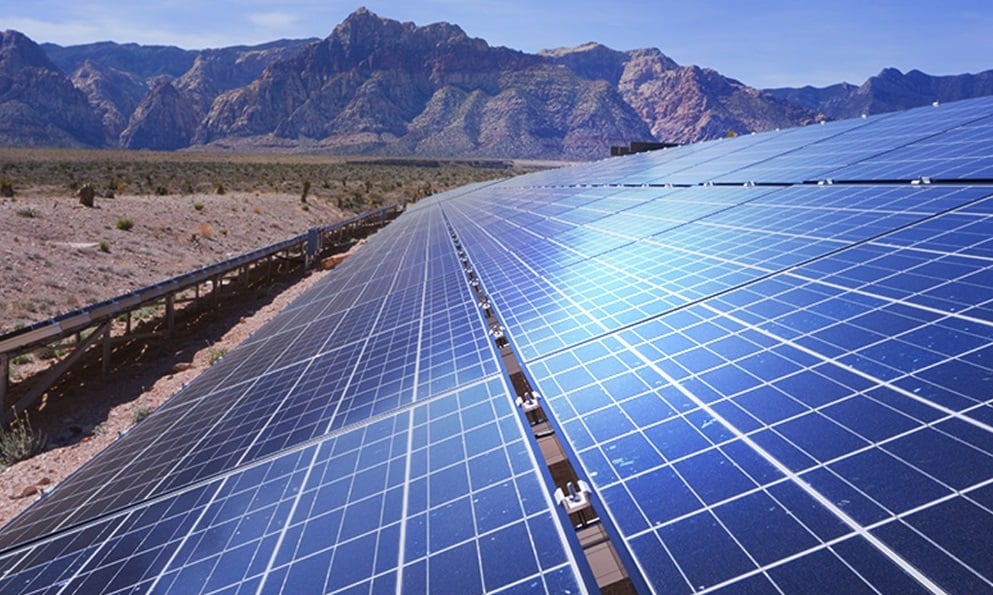These additions have increased India’s total operating solar capacity to 81.8GW. Consequently, India needs to add another 103.8GW of solar capacity within the next four years to meet its target.
Moreover, in the fiscal year 2024, India has more than tripled utility-scale renewables tender capacity to 69.8GW, 48% of which from solar PV. Out of the nearly 70GW of capacity tendered from 1 April 2023 until 31 March 2024, 40GW ended up being awarded, according to a report from the Institute for Energy Economics and Financial Analysis (IEEFA) and JMK Research & Analytics.
Although India boasts ambitious targets, it is still facing several challenges to increase its installed solar capacity, including financing and grid infrastructure.
Grid infrastructure
Vibhuti Garg, director of South Asia at the Institute for Energy Economics and Financial Analysis (IEEFA), says that grid infrastructure expansion is key to installing solar PV projects.
“In the absence of the grid infrastructure, renewables project commissioning will encounter delays. There is a lack of adequate substations to connect to the Inter State Transmission System (ISTS) network and a lack of timely and seamless approvals for open access projects,” she says.
Interstate projects could face further delays as they need approvals from both states as required, in addition to ISTS connectivity.
Ali Imran Naqvi, CEO of solar advisory Genso Group, says robust investments in grid infrastructure and energy storage solutions are necessary to integrate an increasing share of solar power.
“The rapid influx of solar power has strained grid infrastructure in some states, leading to issues in managing and integrating this variable energy source. Upgrading the grid, particularly in rural areas, is essential to handle the surge in solar power,” he says.
According to India’s power ministry, the current Inter-Regional power transfer capacity of the National Grid stands at about 116.5GW, and the Indian government plans to expand this capacity to around 150GW by the end of the decade, at a cost of around INR2,442 billion (US$29.2 billion). The required investment highlights the need for increased financing in the country.
Financing in India
Central banks from around the world have raised interest rates to tackle inflation, making borrowing expensive for solar developers. But key policy rates in India are expected to decline significantly by year’s end, allowing developers to access cheaper rupee-denominated debt and “breathe some life back” into project financing, according to Naqvi.
Last year, India’s solar sector secured US$1.55 billion, marking a 9% decrease from US$1.7 billion in 2022, according to the Geo Solar Energy Report by market intelligence platform Tracxn.
Garg says private capital has led to renewables growth in India. “This will continue but increasingly the public sector will also play a big role. The investments will continue in the form of equity infusions from sovereign wealth funds, infrastructure investment banks and intermediate capital groups, venture capitalists and acquisitions,” she adds.
However, domestic institutional investors and banks also need to increase their exposure to low carbon technologies to drive the growth of the solar industry in India.
“India is increasingly tapping into a growing environment, social and governance (ESG) capital pool, including green bond and sustainability-linked bonds, in addition to conventional sources like banks and financial institutions,” Garg comments.
Naqvi says funding sources are diversifying in India beyond traditional debt and equity options.
“Commercial and industrial consumers increasingly opt for renewable energy due to its cost-effectiveness and alignment with their decarbonisation goals. This demand is boosting investment in both solar and wind power, with hybrid models gaining popularity for their reliable power supply and reduced balancing costs.
“Funding sources are diversifying beyond traditional debt and equity options. While these remain dominant, the clean energy sector is witnessing a maturing market exploring new avenues,” Naqvi says.
Investments are flowing into domestic solar equipment manufacturing tools. For example, US independent power producer (IPP) Enfinity Global secured US$135 million in financing for a 1.2GW solar and wind portfolio in India. The projects in the portfolio span five states: Maharashtra, Delhi, Karnataka, Uttar Pradesh, and the solar hotbed state of Rajasthan.
The IPP says the development of the portfolio is in an advanced stage, with an expected commissioning set between 2025 and 2026.
In the latest edition of PV Tech Power, we will continue to examine the current Indian solar market with topics including the reimposition of the Approved List of Models and Manufacturers (ALMM), federal and state-level policies and challenges of reaching India’s renewables goal.

